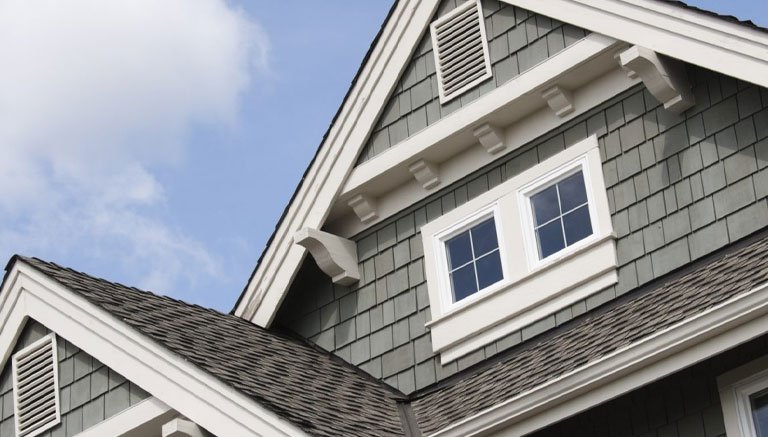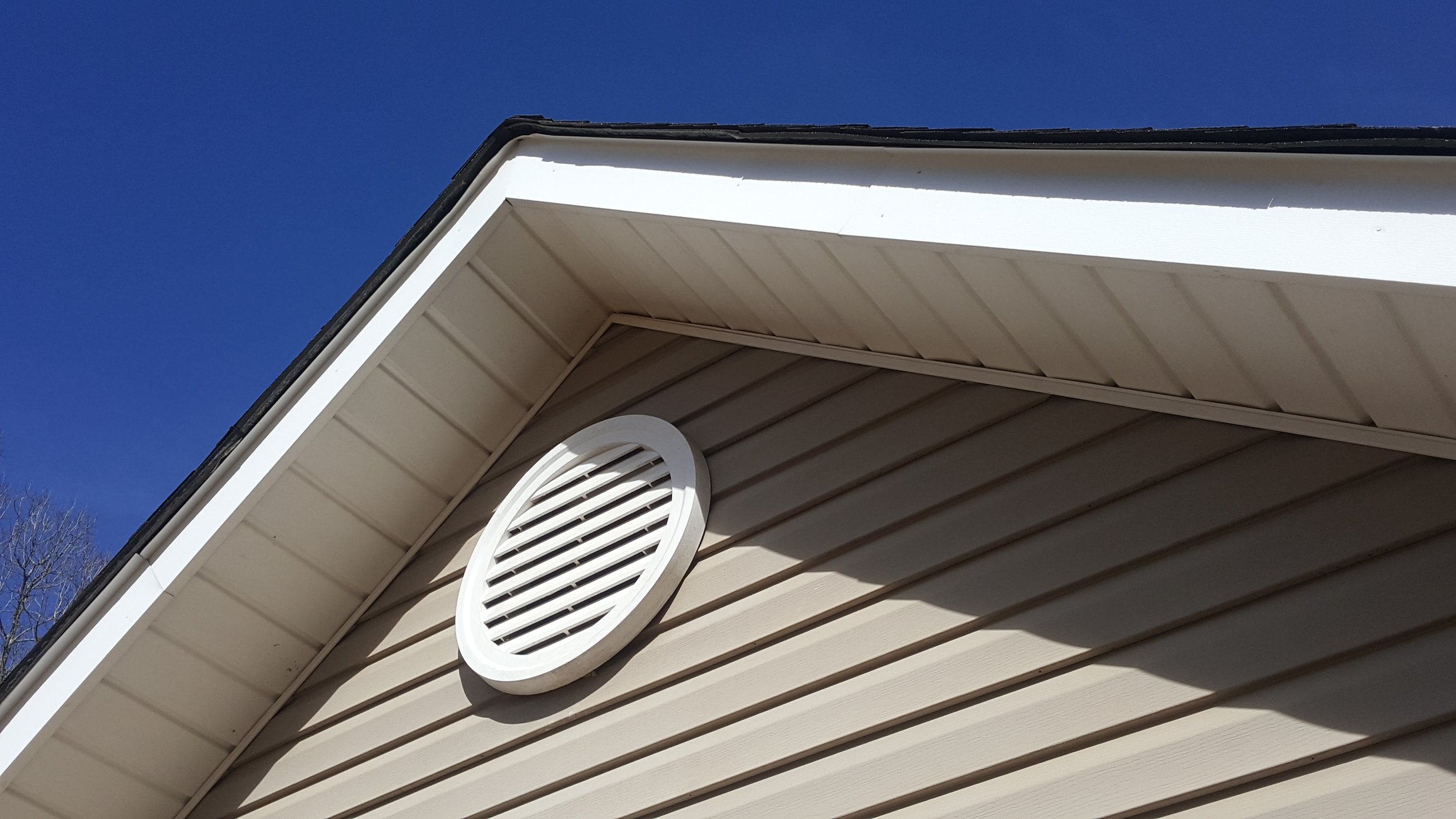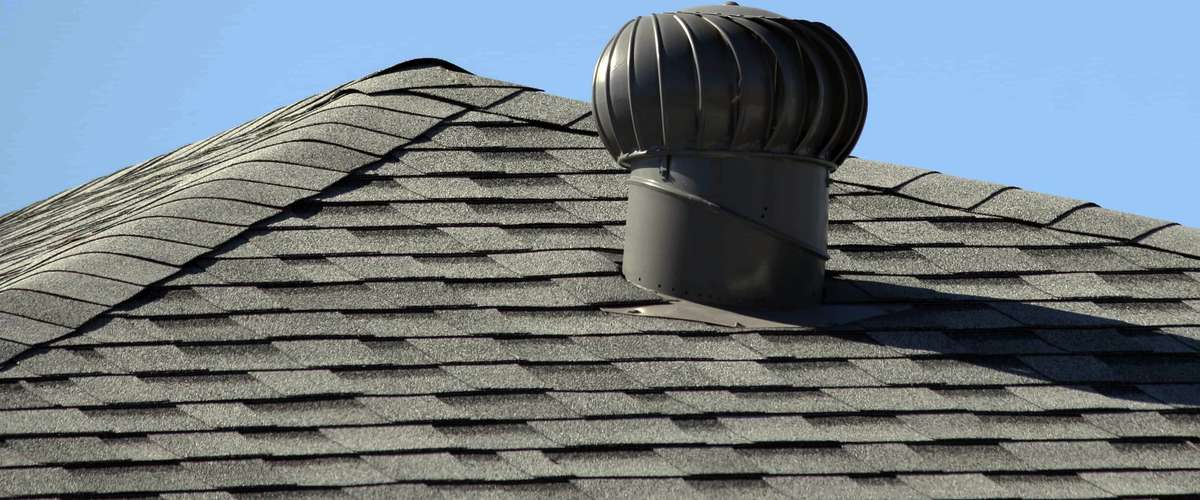
Roof ventilation is a critical component of roofing systems that often gets overlooked. When roof ventilation works appropriately, it allows hot air to escape from the attic and roof spaces. This has many benefits, including reduced cooling costs in your home, improved indoor air quality, and lower risk of mold growth on roof surfaces. This blog post will discuss roof ventilation, why they are needed, and how homeowners can identify an issue when necessary.
What is roof ventilation?
Roof ventilation works by providing a continual flow of air through the roof space, helping remove overheated air and moisture from the roof system. Roof ventilation can also reduce the impacts of changing temperatures on both inside and outside the home.
Roof ventilation is also known as roof venting. When roof vents are not provided, the roof can become hot and cause a heat gain in your home. This excess energy must be vented out of the attic to prevent unwanted air conditioning costs!
Providing roof ventilation is essential for homes with uninsulated crawlspaces or attics. These insulated roofs have poor insulation between the spaces (R-values), unconditioned attics, and older construction practices where there may be no ceiling insulation at all. It’s essential to live in an area with extreme weather patterns such as high humidity levels during summer days or cold winter nights when heating systems run constantly. Alternately, areas near bodies of water could also benefit from roof ventilation.
Why is roof ventilation necessary?
Roof ventilation is necessary to reduce moisture buildup, which can cause roof leaks and structural damage. In addition, roof ventilation keeps the roof space under negative pressure, so that roof insulation materials don’t become contaminated with dust and debris from below (a potential fire hazard).
Roof ventilation is also essential for homes or businesses in areas with many trees around the roof. In this case, roof ventilation will reduce moisture buildup from roof runoff and melting precipitation.
When the roof is enclosed with insulation materials on top of a solid substrate (plywood or OSB), it’s essential to ventilate between them to prevent condensation build-up in cooler weather conditions. Some building codes require that you use roof ventilation materials that are suitable for roof-mounted solar panels.
If you have an uninsulated attic space with poor insulation between the spaces (R-values), roof venting is critical. Ice dams can form quickly and cause roof leaks in this case since the roof space will be heating up over time.
Roof ventilation isn’t needed for homes with high insulation values between spaces (greater than R-30). This means that if your attic has a lot of roof insulation (like over R-60), roof ventilation might not be needed.
In the event of a fire, roof ventilation will help reduce smoke and heat damage by allowing air to flow through the roof space at all times. If you have a flat roof system with no drainage, roof vent caps should be installed, so moisture doesn’t pool on top of the roof.

How can homeowners identify an issue with roof ventilation?
Icicles & Ice Dams
If you notice ice dams or icicles on the roof, it’s a sign roof ventilation needs to be reviewed. Ice and snow accumulation along the roof edge can cause heat loss from your home during the winter months — leading to higher heating bills!
Ice buildup is not only unsightly but also dangerous if people are walking below. You may also notice roof leaks if roof ice dams form because the icicles and snow will melt and drip onto your ceiling. Icicles can damage gutters or break them off completely, resulting in roofing issues that need to be addressed by a roofer.
Your Air Conditioner Breaks Down Frequently
Your roof may not be adequately ventilated if your A/C unit has broken down multiple times. The extra stress on the system from poor roof ventilation can shortens its lifespan and lead to costly repairs or replacements. If you have an energy-efficient air conditioner, this will also result in higher electric bills because of the increased workload.
Poor roof ventilation can also lead to a higher number of hot, muggy days. If you find your house is constantly hotter than the rest of your neighborhood during the summer months and you don’t have AC vents in all rooms, this could be due to roof insulation problems.
Hot or Cold Areas in The Home
If you experience cold or hot spots in the home, roof ventilation might not be enough. Areas near rooms with high heat usage (kitchen and bathroom) could benefit from roof insulation materials suitable for roof-mounted solar panels.
If you notice windows fogging up during the winter months, it’s a sign of moisture build-up inside your roof space. This can be fixed by roof ventilation materials suitable for roof-mounted solar panels or installing roof vent caps to keep water off the roof and running down in a controlled manner.
Roof Leaks, Mold & Mildew
Roof leaks, roof mold, and roof mildew are all signs of poor roof ventilation. If you see water stains on the ceiling or walls inside your home during winter months when it’s not raining outside, this is a sign that roof venting isn’t enough.
If there have been roof leaks in the past year, roof ventilation may need to be reviewed. If your roof has been damaged from a hail storm or other weather event, you will likely also have roof mold issues on top of roof leaks and water damage.
Homeowners must review roof venting as part of their annual maintenance checklists so they can identify an issue before it becomes a roofing emergency.
Unwanted Pests Found Inside the Home
If you’ve spotted roof rats, roof squirrels, or other animals in your home, it could be because they’re finding roof venting that is ideal for them. Even if you don’t have an attic, roof rats and roof squirrels can get into your home through roof vents or roof gutters.
Insect infestations are also a sign of poor ventilation — they indicate there’s moisture in the area where bugs (like ants) prefer to live. If your roof has been damaged due to water damage from storms or leaks, this could result in opportunistic insects invading the space looking for shelter during winter months when it’s cool and moist outside.
Roof Ventilation Tips: make sure any gaps around chimneys are sealed, so no critters get inside; install screens over wall vents on flat roofs with good roof ventilation materials; roof insulation for roof-mounted solar panels can increase comfort in the home by reducing heat gain and increasing energy efficiency.
How to improve ventilation for your roof
Improving ventilation for roofing isn’t tricky. You can begin by looking for areas where roof venting may be inadequate, like around chimneys or roof vents blocked with leaves and debris.
You can also improve roof ventilation in the attic space if there is a moisture problem — this will help you avoid any mold issues. Invest in high-quality roof ventilation materials, especially for roof-mounted solar panels, so you can benefit from the extra energy production without worrying about roof insulation.
Also, make sure that there is a sound exhaust system at or near your ridgeline to pull hot air out of the attic space and keep roof venting working correctly all year round. This will help avoid moisture issues, roof leaks, and roof mold in the roof space.

What is your biggest challenge with roof ventilation? Have you reached out to Semper Fi Exteriors for a free inspection of the vents on your roof yet? Don’t wait any longer. A quick call could save you time and money down the road when it comes to air conditioner repairs, system replacements, or other unforeseen problems that can arise from not providing adequate airflow through your home’s attic space. When was the last time you had a professional check-up done on this vital part of your home’s structure? We’re happy to help! Reach out anytime if we can give you some helpful tips about how best to maintain ventilated airflow in hard-to-reach areas so that there are no surprises come summertime.
